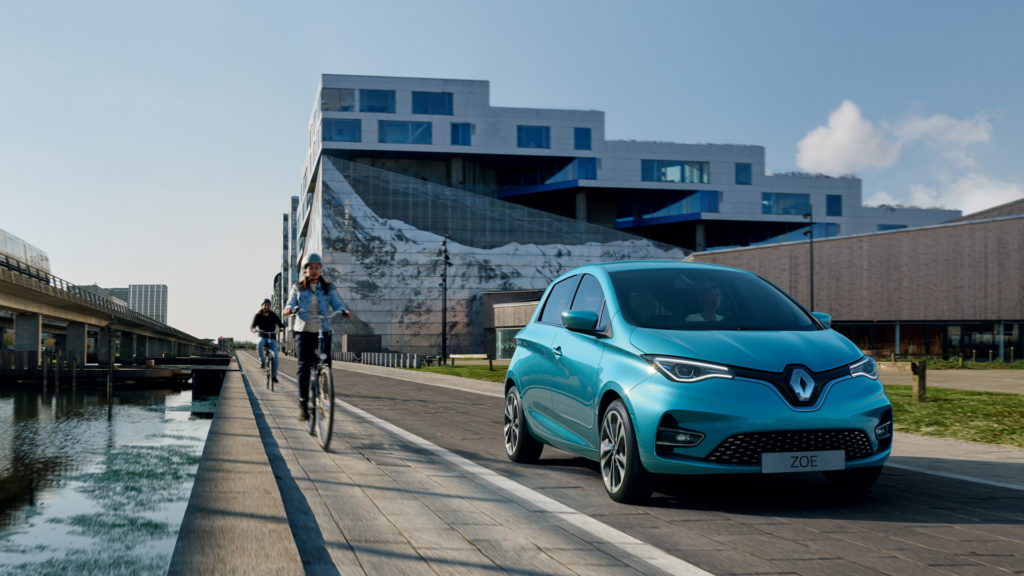Last updated on April 22nd, 2020 at 11:33 am
The UK government offers different levels of discount depending on the type of electric vehicle you purchase. The maximum grant available for cars is £3,500, motorbikes and mopeds sit at £1,500, and vans, large vans and trucks have a healthy £8,000 cash-back. The amount is automatically deducted off the vehicle's list price and isn't applicable when buying a used vehicle. It's for new car purchases, only.
The government calculates the amount by totting up the CO2 emissions released by your vehicle – also known as the tailpipe emissions. Buy yourself an all-electric vehicle and you'll capitalise on the full amount. In October 2018, hybrids (known as PHEVs), were scrapped from the scheme. However, said vehicle types still benefit from the Homecharge Scheme, which we'll explain below. To fully understand the differences between BEVs, HEVs, PHEVs and FCEVs, read our detailed guide.
It's important to know that not all low-emission vehicles are eligible for the grant – the government needs to approve them prior to them being discounted.
Low-emission vehicles eligible for a plug-in grant
Vehicles that are eligible for a grant are broken down in six categories:
- Cars
- Motorcycles
- Mopeds
- Vans
- Taxis
- Large vans and trucks
The UK government has a grant cap and a few criteria. Cars need to emit less than 50g/km of CO2, have an electric range of 70 miles or above. Here, any car that costs over £10,000 gets the full £3,500. Cars that are cheaper will get 35% off the RRP; for example, if the total cost of the car is £9,000 you'll get a £3,150 (35%) grant from the government.
Taxis fall under the same criteria but the grant will pay 20% of the purchase price, up to a maximum of £7,500.
A somewhat similar principle applies to motorbikes and mopeds, however, these must not emit any CO2 emissions and must have an all-electric range of at least 31 and 19 miles, respectively. 20% off the RRP of up to £1,500 is there for the taking.
As electric vans are comparatively new and interest for them has been comparatively slower, the government is incentivising its scheme a little more: vans must emit less than 75g/km of CO2, run for only 10 miles on a single charge and are eligible for a 20% reduction off the RRP of up to £8,000.
Large vans and trucks are a little more complicated: the vehicles must emit 50% less CO2 emission over the equivalent Euro VI vehicle that carries the same capacity. Like vans, they need only travel for 10 miles on all-electric power. As for the grant, for the first 200 orders, the government will pay for 20% of the purchase price up a maximum of £20,000, whereby after, offers the same grant as regular-sized vans.
A full list of vehicles can be accessed through the government's website – it's frequently updated.
Electric Vehicle Homecharge Scheme
On top of the plug-in grant, the government also offers the Homecharge Scheme. Unlike the former, this can be triggered with any electrified vehicle that's built after 1 October 2016. Better still, your EV doesn't have to be new – the scheme applies to used vehicles, too.
The Homecharge Scheme was set in place to make it more convenient to charge your vehicle within your own premises. The grant is provided by the Office for Low Emission Vehicles (OLEV) and offers up to £500 off the cost of your new home charging unit. If you live in Scotland, a further £300 grant is to be had, taking the tally up to £800.
To qualify for the scheme, you must install and use an OLEV-approved home charger, have it installed within four months of taking delivery of an electric vehicle, and have an eligible vehicle – an up-to-date list can be found on the government's website.
